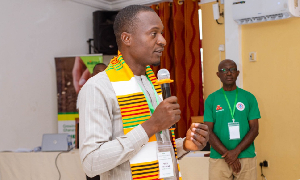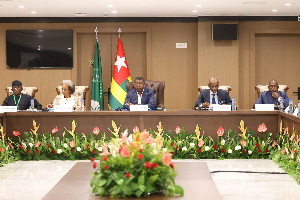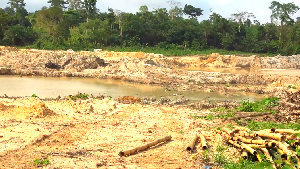An economic and a Research Fellow of the Centre for Policy Analysis, (CEPS) Dr. Charles Jebuni has expressed his reservations about the President’s Special Initiative (PSI) which are aimed at stimulating economic growth.
He explained that they could not improved the livelihood of the extreme poor since they are not targeted at the Savannah areas majority of the extreme poor live. Dr Jebuni was speaking at a media encounter on the topic, “How Pro Poor is the Ghana Poverty Reduction Strategy budget” in Accra at the weekend.
It was organised by the Institute of Economic and Financial Journalists (IFEI), with support from UNICEF Ghana and was meant to share information on the expenditure plan of the Ghana Poverty Reduction Strategy.
The President, Mr John Agyekum Kufuor had launched initiatives to develop cassava starch and garment industries and would soon launch two others namely oil palm and salt due to their immense economic potentials. All the initiatives are to be sited in Southern Ghana.
Dr Jebuni noted that resulted of the Ghana Living Standards Surveys suggests that poverty is disproportionately a rural phenomenon and also disproportionately a savanna-zone problem.
“Poverty is lowest in Greater Accra and highest in the three regions of the north-Northern, Upper West, and Upper East regions. Even though the three regions of the north constitute only 17.9 percent of the action’s population, 43.5 percent of the extremely poor in 1998/99 come from these regions.
On the poverty profile of Ghana, he noted that poverty is high and widespread in spite of considerable reduction in the levels of poverty over the decade of the nineties. He said 40 percent of Ghanaians are poor and 26.8 percent of Ghanaians could not meet their nutritional requirements even if all their budget were spent on food.
Assessing the GPRS, he said that the government priorities raise questions about the contents of a pro-poor growth strategy and it also raise the issue of sequencing. “It would appear that the medium-term priorities and expenditures were imposed on the long-term objectives and strategy.
The medium-term priorities and expenditure allocations do not effectively reflect the consensus, objectives and strategy of the long-term document”. The Research Fellow explained that the poverty reduction Strategy would have to address the issues of increasing productivity and the incomes of food crop farmers.
The critical area of concern, therefore, is the section on production and gainful employment. While 48.55 percent of the total expenditure is devoted to this area, only 3.34 percent is allocated to agricultural production.
“Even this meagre allocation is not targeted at smallholder food crop farmers but includes mechanization, promoting and commercial farming among others”, he said. Dr Jebuni said that the largest share, more than 50 percent, of these expenditures are allocated to infrastructure developments that have no direct bearing on the poor. Dr Ramesh Shrestha, UNICEF representative in Ghana said issues of poverty are of great concern to UNICEF because children constitute 54 percent of the world population.
General News of Thursday, 19 September 2002
Source: Ghanaian Times
President's Special Initiative's can't help the poor
Entertainment











